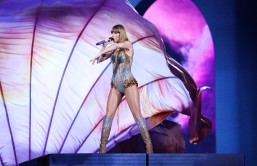NASA’s Hubble Telescope recently captured an image of two galaxies colliding to each other.
The scientists are now monitoring this pair which they named Arp 142. The spiral galaxy or the one on top is called NGC 2936 while the other galaxy on the lower left of the picture is called NGC 2937.Their interaction may predict our own galaxy's interaction with another galaxy.
The scientists observed that the two were colliding to each other because of their differences in the gravitational pull. The interaction or the collision caused changes to both galaxies. The collision triggered star formation for NGC 2936 evident on the bluish knots inside it. Yes, those blue objects are young stars. The reddish lines you see in the picture are dust escaping the galaxy. The collision pulled them out.
Meanwhile, NGC 2937 is a galaxy with little star and gas inside it. If you notice, it looks clearer than the other galaxy with a slight hint of red on its outer core. Those are old stars and it seems that it is no longer capable of creating new stars.
Some websites called these galaxies different names such as ‘penguin-shaped galaxies’ according to L.A Times while NASA’s Hubble Heritage Team called it a celestial bird.
Well, colliding galaxies are normal episodes in space. During galactic collisions, stars pass each other resulting to a violent collision that causes dust and gas to escape such as what happened in Apr 412. The collision will continue until the two galaxies merge after 1.5 billion years. Apr 412 is taking the same direction so it will become a single galaxy in the future.
The Milky Way galaxy, where Earth belongs, and our neighboring Andromeda Galaxy is destined to collide four billion years from now based on a study made by Space Telescope Science Institute astronomer Roeland van der Marel published in Astrophysical Journal. Andromeda is actually heading closer to Milky Way at a rate of 250,000 miles per hour. Both are spiral galaxies but will become an elliptical galaxy after the collision.








